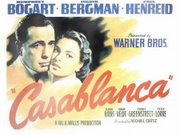dimanche 17 mars 2013
samedi 16 mars 2013
dimanche 10 mars 2013
Creedence Clearwater Revival
Creedence Clearwater Revival est un groupe de rock aux influences blues et country, originaire de Berkeley dans la région de San Francisco. Formé en 1958 à l'initiative de l'auteur, compositeur, chanteur et guitariste, John Fogerty, du batteur Doug Clifford, du bassiste Stu Cook — et rapidement rejoint par le frère aîné de John, Tom Fogerty — il prendra d'abord le nom des Blue Velvets puis des Golliwogs, avant de se révéler en 1967 avec l'album Creedence Clearwater Revival.
À sa séparation en 1972, Creedence Clearwater Revival aura marqué de son empreinte l'histoire du rock. Des succès planétaires comme Have You Ever Seen the Rain?, Proud Mary, Green River ou Fortunate Son font encore partie des « cinq cents chansons qui ont forgé le rock n'roll1», six des sept albums (à l'exception de Mardi Gras) et les diverses compilations font encore recette et sont aujourd'hui certifiés disques de platine.
Son inscription au Rock and Roll Hall of Fame en 1993 consacre Creedence parmi les groupes américains les plus marquants des cinquante dernières années.
mardi 5 mars 2013
Ma galerie
 The Princess from the Land of Porcelain »
The Princess from the Land of Porcelain »
La Princesse du pays de la porcelain (The Princess from the Land of
Porcelain), which hangs in the Peacock Room, was part of a series of
costume pictures undertaken by Whistler in mid-1860s in which western
models appear in Asian dress, surrounded by Chinese and Japanese objects
from Whistler's own collections of porcelain, lacquer, fans, and
painted screens. Whistler's creative borrowing of Asian objects and
influences was a way to suggest the temporal and spatial distance of a
purely imaginary realm. Here, the noted Victorian beauty Christina
Spartali strikes a pose that recalls both the elongated figures depicted
on Chinese Kangxi porcelain and the graceful courtesans that appear in
ukiyo-e prints. The Princesse, which was exhibited at the Paris Salon in
1865, was purchased around 1867 by the shipping magnate Frederick
Leyland, who hung it in his dining room, where he also displayed his
extensive collection of Kangxi porcelain. Whistler suggested some
changes to the color scheme of the room which would, he told Leyland,
better harmonize with the palette of the Princesse. The result was
Harmony in Blue and Gold: The Peacock Room, which Whistler completed in
1877. Later, in 1903, Charles Lang Freer purchased the Princesse and,
the following year, acquired the entire Peacock Room, where Whistler's
Princesse has presided over a changing array of Asian ceramics ever
since. It, like the room in which it hangs, embodies the Freer
aesthetic: an imaginative, cosmopolitan representation of East-West
harmony, an idea, as the American critic Royal Cortissoz noted in 1903,
"as far removed from the joys and troubles of mere humanity as so many
pieces of Oriental porcelain."
Inscription à :
Articles (Atom)






